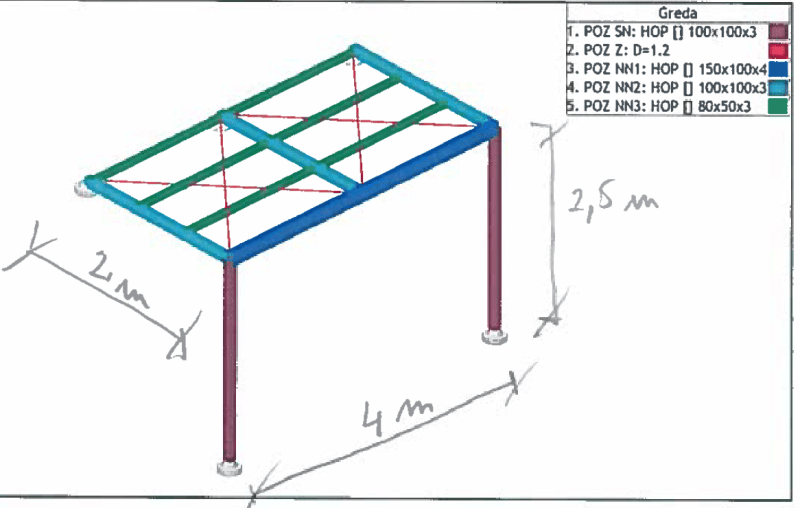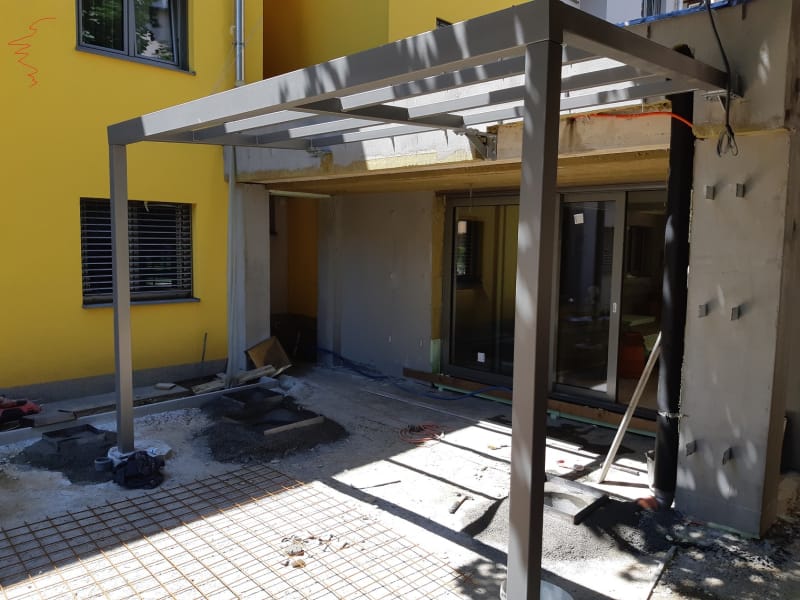n3jc
Civil/Environmental
- Nov 7, 2016
- 189
Helo guys. I apologize for my poor English. Hope you can understand and help.
Steel canopy was designed as bolted (all connections between beams and columns).
Supports are pinned (at base).
Since structure like this is not horizontaly stable, there is bracing in a roof plane.
Contractor made roof as one piece - all beams welded together.
The roof is supported on columns (bolted) and on small steel corbels that are fixed in a near building.
Is this canopy horizontally stable?
Wind forces will be small since vertical planes between columns are empty/free.
Seismic forces shouldnt be large since its a small canopy.
In a calc. model Id use all connections as pinned which means structure is not horizontally stable. But since forces will be small is this the right approach?
Your thoughts?


Steel canopy was designed as bolted (all connections between beams and columns).
Supports are pinned (at base).
Since structure like this is not horizontaly stable, there is bracing in a roof plane.
Contractor made roof as one piece - all beams welded together.
The roof is supported on columns (bolted) and on small steel corbels that are fixed in a near building.
Is this canopy horizontally stable?
Wind forces will be small since vertical planes between columns are empty/free.
Seismic forces shouldnt be large since its a small canopy.
In a calc. model Id use all connections as pinned which means structure is not horizontally stable. But since forces will be small is this the right approach?
Your thoughts?


